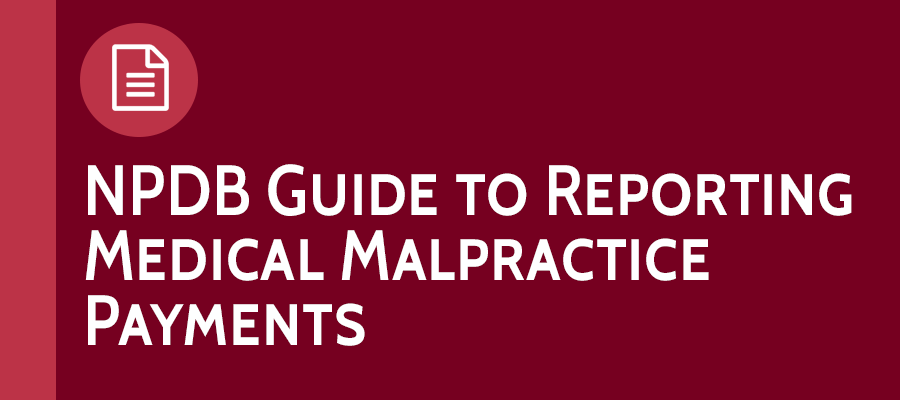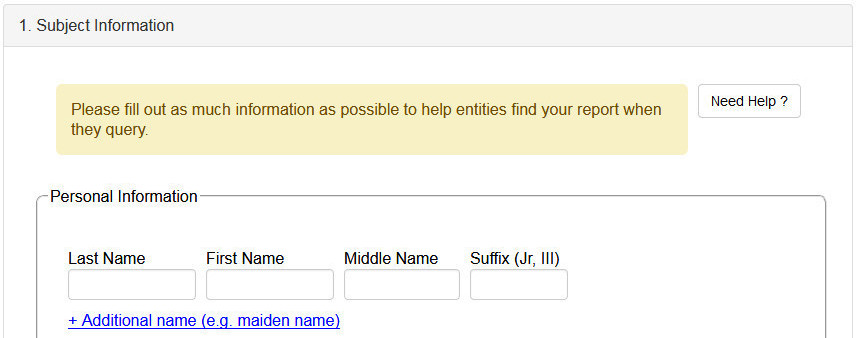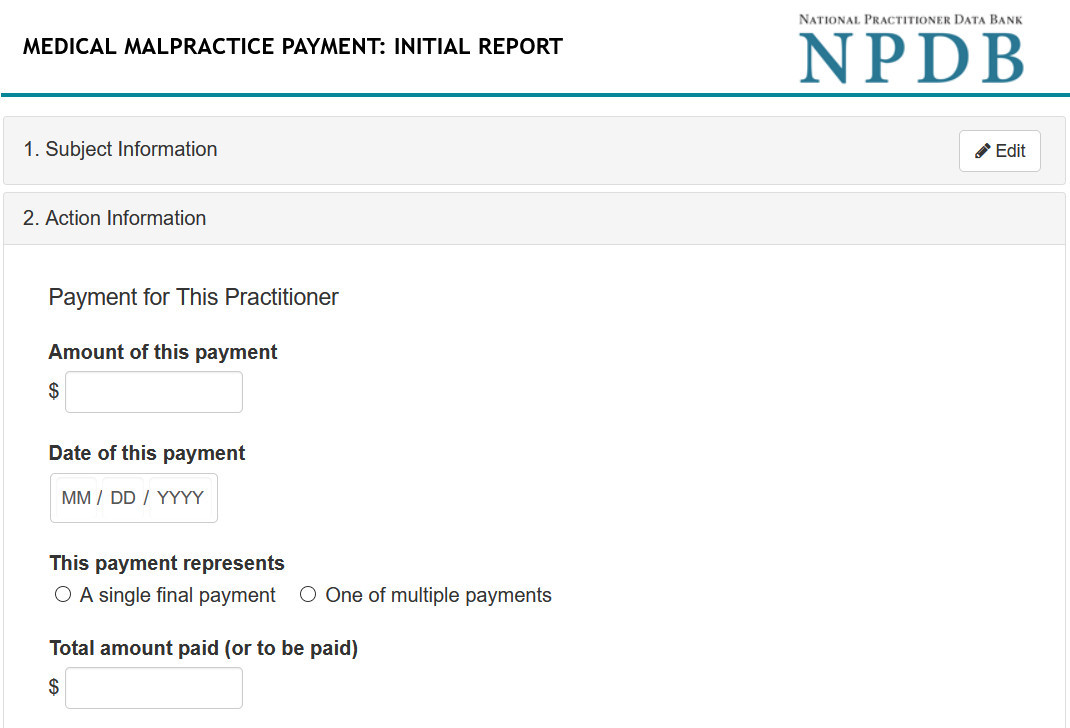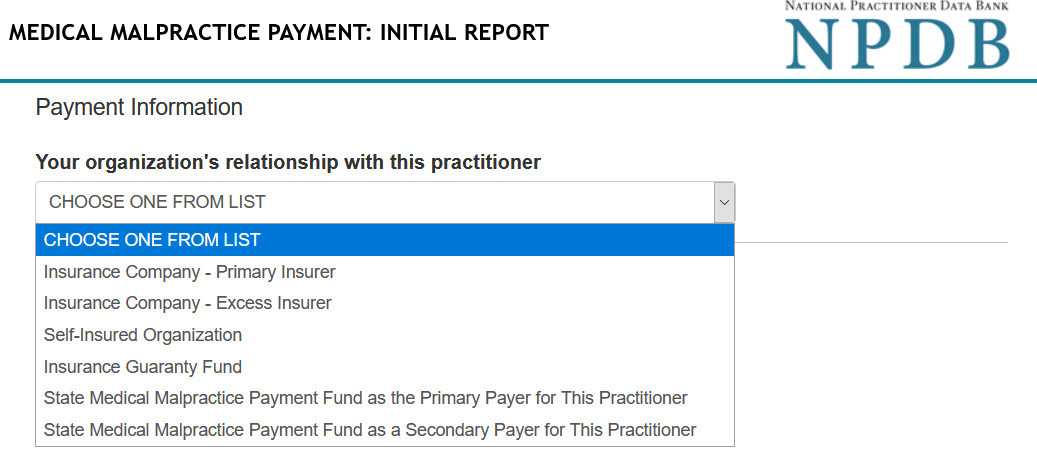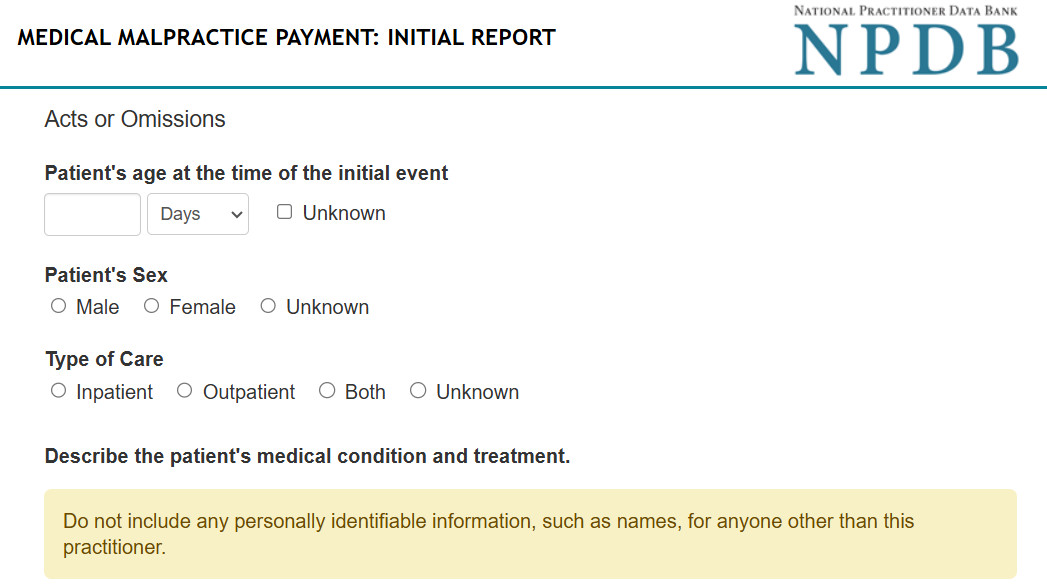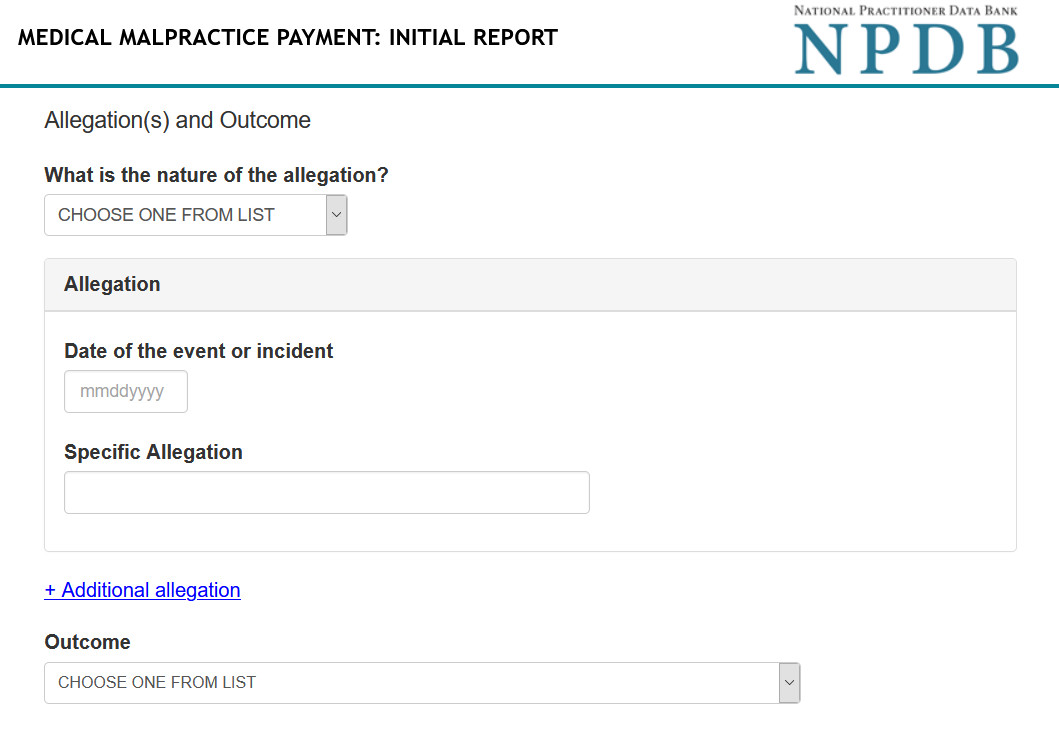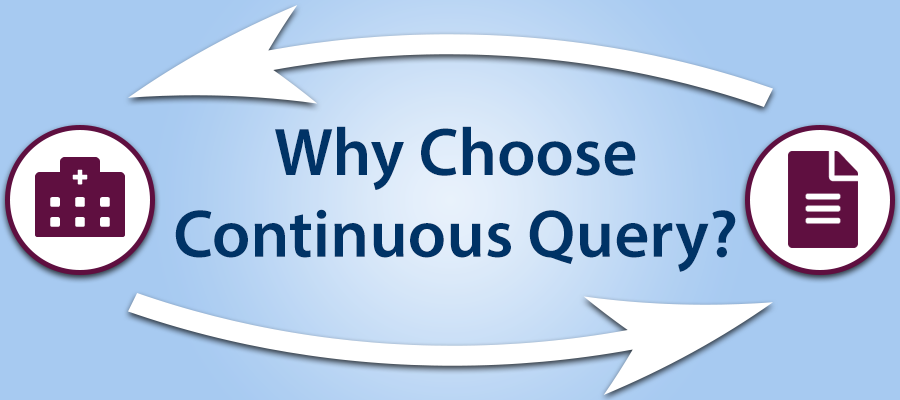NPDB Insights - April 2021
Register Now for the Medical Malpractice Reporting Requirements Teleconference on April 14!
Join us Exit Image on Wednesday, April 14 at 2 p.m. ET, for a presentation on requirements for reporting medical malpractice payments and a Q&A session with NPDB staff. For more details, visit our Events page.
on Wednesday, April 14 at 2 p.m. ET, for a presentation on requirements for reporting medical malpractice payments and a Q&A session with NPDB staff. For more details, visit our Events page.
We will provide one NAMSS Continuing Education Credit for those who attend the live teleconference and request it. When you register Exit Image to participate in the teleconference, please specify on your registration form that you would like a NAMSS CEU. Note that it may take 2–3 weeks after the teleconference to receive the CEU.
to participate in the teleconference, please specify on your registration form that you would like a NAMSS CEU. Note that it may take 2–3 weeks after the teleconference to receive the CEU.
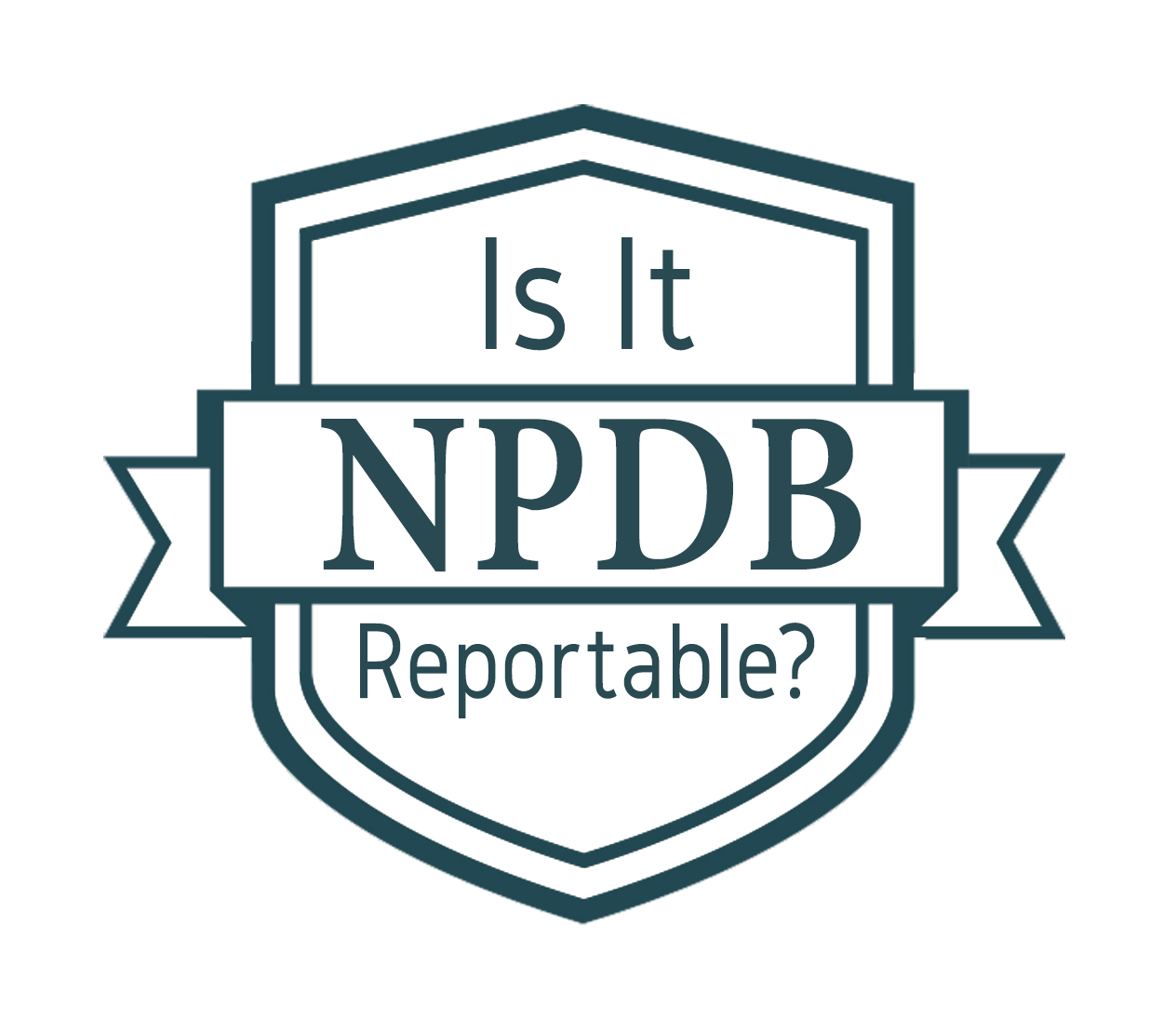
Is It Reportable?
Does a medical malpractice payment have to exceed a certain dollar amount before it is reportable to the NPDB?
No. There is no minimum payment amount threshold. Medical malpractice payments of any amount that meet the reporting criteria should be reported to the NPDB.
Step-by-Step: Reporting Medical Malpractice Payments
Entities (including medical malpractice insurers and self-insured organizations) must submit a Medical Malpractice Payment Report if they make a payment for the benefit of a health care practitioner in settlement of, or in satisfaction in whole or in part of, a written claim or complaint against that health care practitioner, and additionally, each of the following must be true:
- There is an exchange of money;
- The payment is the result of a written complaint or claim demanding monetary payment for damages (based on the practitioner's provision of or failure to provide health care services); and
- The practitioner is named or sufficiently described in both the complaint or claim, and in the settlement, release, or final adjudication (or the practitioner's name was removed as a condition in the settlement or release).
For more tips on when to submit a medical malpractice payment report, visit our NPDB Reporting Guide and the NPDB Guidebook.
How to Submit a Medical Malpractice Payment Report
- Sign in to the NPDB and select Report on the Select an Option page.
- On the Identify the Subject page, select that the subject is an individual, then enter the practitioner's name.
- Select the type of action on the following page.
- Complete the Subject Information section. Be sure to fill out as much information on the subject as possible to help querying organizations find your report.
- Enter the practitioner's personal information, such as name and birth date.
- Enter the practitioner's home and work address and organization name.
- Enter the type of license against which the action was taken.
- Enter the schools or institutions the practitioner attended for their professional degree(s), training(s), or certification(s).
- Enter the practitioner's known identification numbers, which could include Social Security Number, National Provider Identifier, or Drug Enforcement Administration Number.
- Enter all of the practitioner's hospital affiliations.
- Complete the Action Information section.
- Enter the payment information, such as the amount, the date of payment, whether the payment represents a single final payment or one of multiple payments, the total amount to be paid, and what the payment was a result of (e.g., a settlement).
- Enter the date of judgment, the name of the adjudicative body, the case number, and the court file number.
- Describe the judgment, including any conditions or terms of payment, in the narrative description.
- Check whether or not this is a global settlement for multiple claimants and enter the total number of claimants included in the settlement.
- Check whether or not there are multiple practitioners included in this case and enter the total number of practitioners and the total amount to be paid for all practitioners.
- Complete the Payment Information section.
- Identify your organization's relationship with the practitioner and enter all available information regarding payments made by other organizations.
- Complete the Acts or Omissions section.
- Enter information on the primary claimant, such as age at the time of the initial event, sex, and type of care received.
- Describe the primary claimant's medical condition and treatment and the procedure(s) performed in the narrative description sections.
- Complete the Allegation(s) and Outcome section.
- Select the nature of the allegation, enter the date of the event or incident, and enter the specific allegation. Then describe the allegation.
- Select the outcome of the allegation and describe the allegations and injuries (or illnesses) that form the basis for the action or claim.
- Review the information you provided to ensure it is correct, then complete the Certification section.
- Save or print a copy of the report on the Report Submission Complete page for your records.
- As noted in the NPDB Guidebook, entities are not excused from reporting simply because they missed a reporting deadline. Reports must still be submitted as soon as possible after a deadline is missed.
For more comprehensive instructions and requirements for medical malpractice payments, see the NPDB regulations and the NPDB Guidebook.
Looking for information on how to submit other types of reports? Check out our Introduction to Reporting, Reporting Clinical Privileges Actions, and Reporting State Licensure Actions articles. Keep an eye on NPDB Insights for upcoming articles on how to report health care-related civil judgments, health care-related criminal convictions, and other adjudicated actions or decisions.
Dear NPDB
What is Continuous Query?
Querying the NPDB serves an essential function of heightening accountability in the health care community and increasing patient safety.
You have two options for querying the NPDB: One-Time Query and Continuous Query. While they both provide an initial query response and fulfill legal and accreditation requirements, Continuous Query provides additional features and benefits over One-Time Query for the same cost.
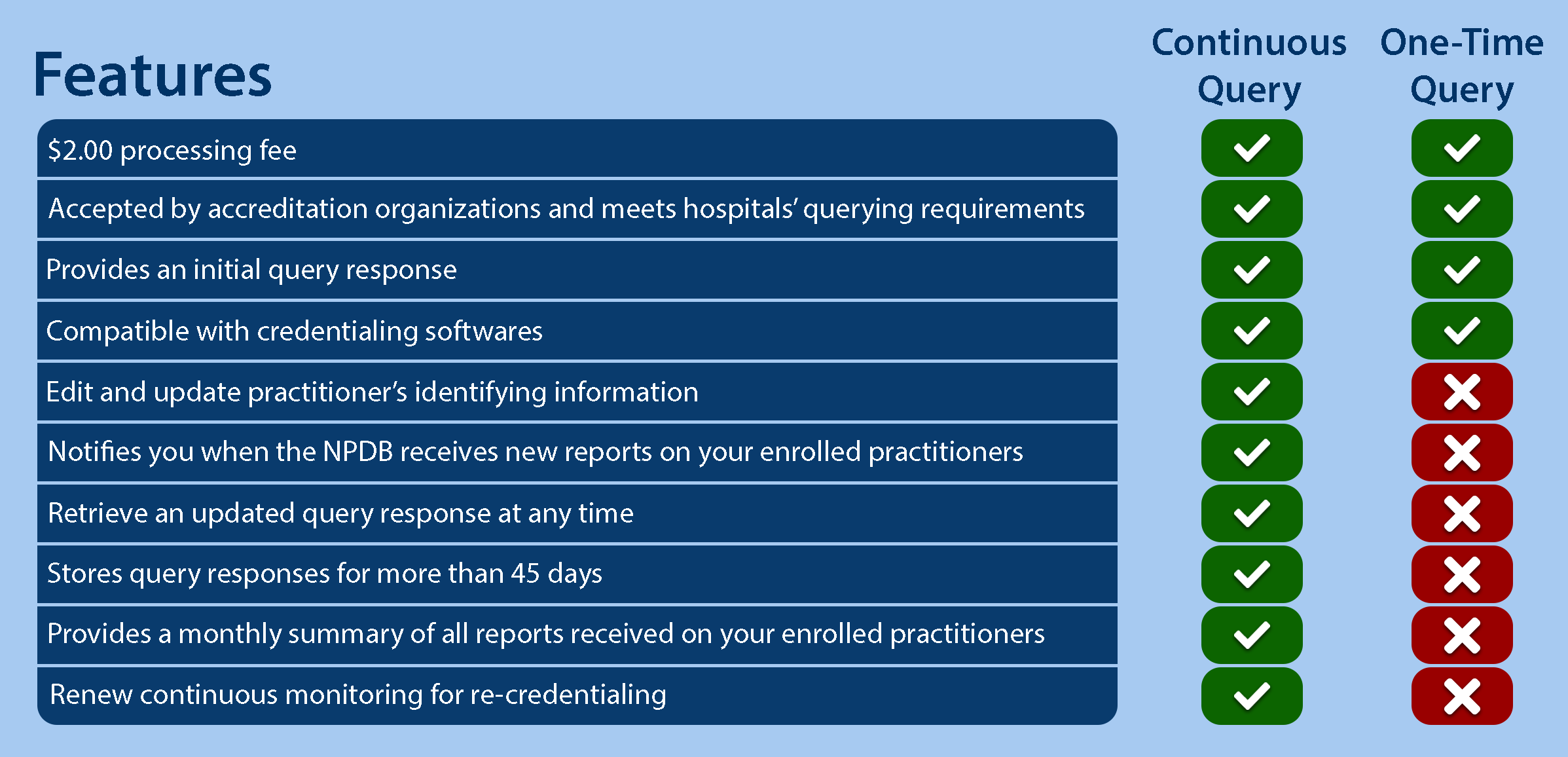
Continuous Query vs. One-Time Query Table
| Features | Continuous Query | One-Time Query |
|---|---|---|
| $2.00 processing fee | Yes | Yes |
| Accepted by accreditation organizations and meets hospitals' querying requirements | Yes | Yes |
| Provides an initial query response | Yes | Yes |
| Compatible with credentialing software | Yes | Yes |
| Edit and update practitioner's identifying information | Yes | No |
| Notifies you when the NPDB receives new reports on your enrolled practitioners | Yes | No |
| Retrieve an updated query response at any time | Yes | No |
| Stores query responses for more than 45 days | Yes | No |
| Provides a monthly summary of all reports received on your enrolled practitioners | Yes | No |
| Renew continuous monitoring for re-credentialing | Yes | No |
In addition to the features above, reports received using Continuous Query are disclosed an average of 10 months sooner than reports received using One-Time Query!
With the additional features of Continuous Query, your organization has the most up-to-date information on your enrolled practitioners and can make more informed hiring, licensing, privileging, and credentialing decisions.
Don't know how to start using Continuous Query? Visit our How to Activate Continuous Query page, and check out our new Why Choose Continuous Query? infographic.
The latest updates and resources are available at https://www.npdb.hrsa.gov.
Previous editions of NPDB Insights are available in our archive.
 An official website of the United States government.
An official website of the United States government.

